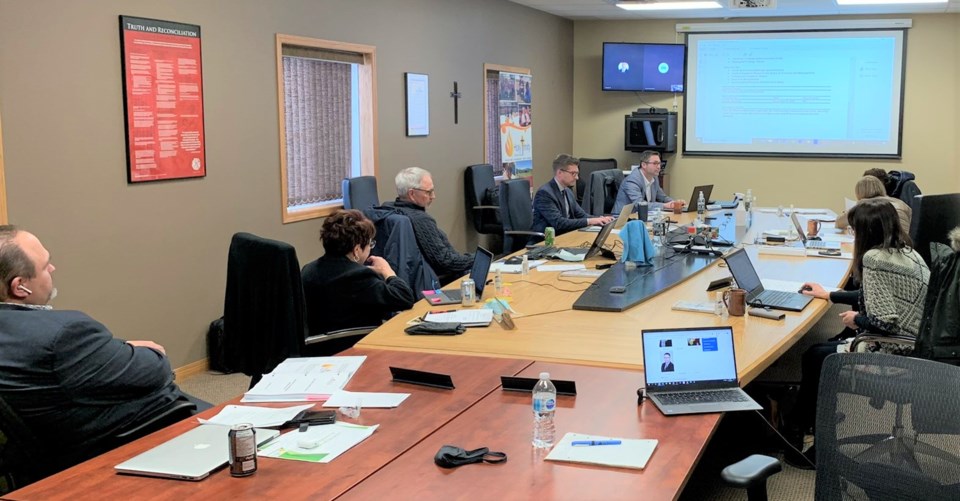Three-quarters of all students in Moose Jaw’s Catholic school division have access to a Chromebook or similar device, which has helped meet the demand for digital learning in-person and online.
This year, there are 1,735 devices available for the 2,301 students throughout Holy Trinity Catholic School Division, which covers 75 per cent of the student population.
In Moose Jaw, there are enough devices to support 57 per cent of the population at St. Agnes; 82 per cent at St. Margaret; 78 per cent at St. Michael; 66 per cent at Sacred Heart; and 29 per cent at Phoenix Academy. There are enough devices at St. Mary to cover 115 per cent of the student population and 108 per cent of the student population at Vanier Collegiate.
There are about 75 extra devices on back order, with many designated for Phoenix Academy and to replenish devices on loan to students in Holy Trinity’s enhanced virtual classroom.
In comparison, there were enough devices last year to cover 47 per cent of the overall student population.
The early returns of having so many devices have been positive, said education director Sean Chase. The division has managed to balance the demand for digital delivery in the classroom with support for students learning outside the classroom.
For example, the division offered students in one classroom at Sacred Heart Chromebooks after a positive case COVID-19 was recently confirmed.
The division has also provided devices to students learning through the enhanced virtual classroom. Many of these youths are immunocompromised and have been taking classes online since September.
Meanwhile, all students in grades 7 and 8 each have a device to themselves, continued Chase. This coincides with Vanier’s strategy, where every student has access to a personal device as well. The division gave every Vanier student a device long before the pandemic began.
“That was the next natural step for us in terms of enhancing the overall digital literacy skills of not just our students, but our middle-years teachers,” he added. “Overall, our returns to this point have been highly successful to this point, as we’re really right now capitalizing on the digital literacy skills that were developed through supplemental learning in the spring.”
Holy Trinity used three sources to purchase almost 600 extra Chromebooks this school year. The board office bought some devices; it applied to the Ministry of Education’s pandemic relief program; and principals and vice-principals were encouraged to use school funds to buy additional technology.
Besides Chromebooks, the school division has also worked to upgrade existing technology in the classroom, something it had planned to do before the pandemic began, Chase said. Almost every classroom has an interactive SMART board, but this year it began replacing some of the oldest and outdated boards with 75-inch high-definition TVs.
“It’s (a) better view. We’re hearing that from students across the division … . The definition and resolution is much better for kids and has a wider viewing angle,” he remarked.
The division also combined those TVs and the remaining SMART boards with another device that allows teachers to connect to the TV anywhere in the room. A student with a device can also connect using that same network connection.
Teachers have worked hard since March 2019 to build up their skills and digital presence using online programs, said Chase. This means students — in class or at home — can connect to those programs and enhance their learning as well.
The current plan is not to have a device available for every student, Chase added. Instead, the division will conduct a mid-year evaluation about how this year has gone with the available technology, while it will review the age of certain devices and potentially upgrade those first.




